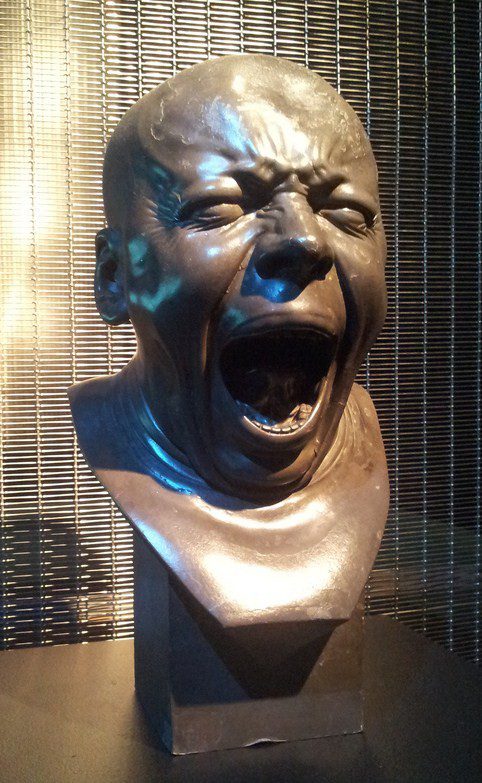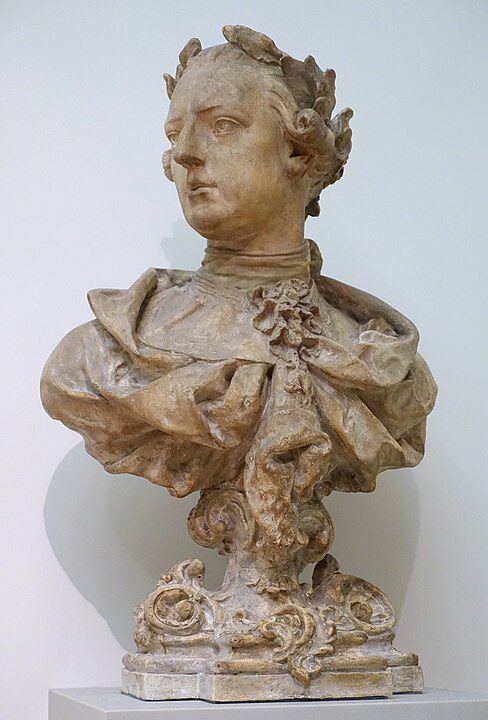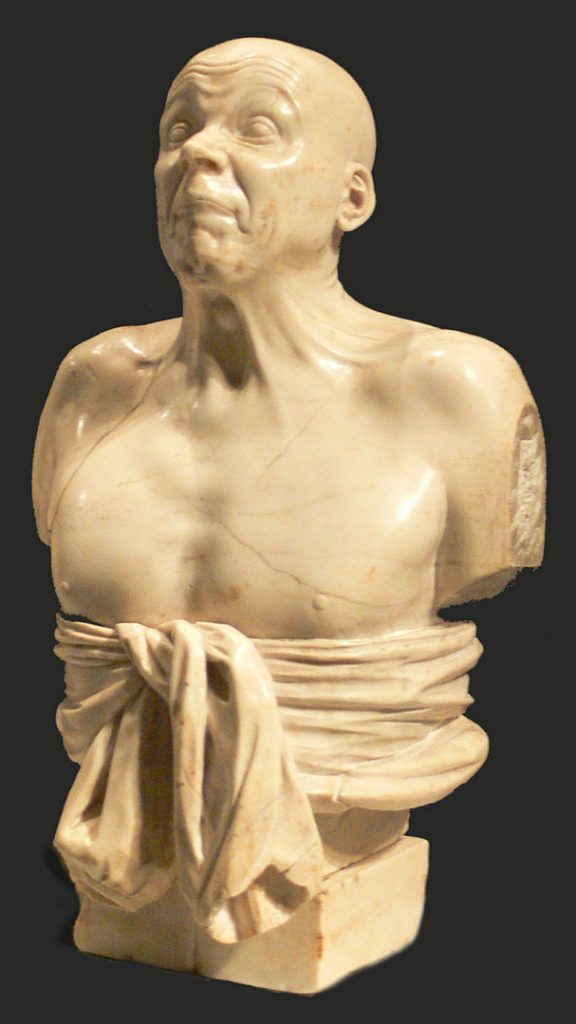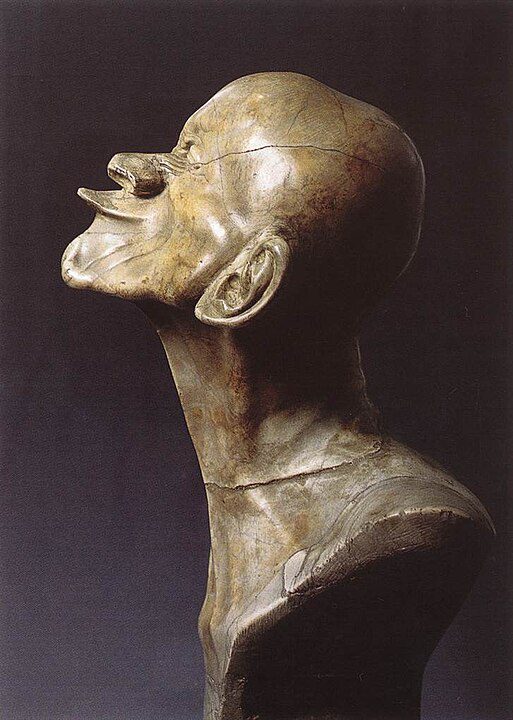
Franz Xaver Messerschmidt was born on February 6, 1736, in the town of Wiesensteig in Germany. He grew up in a modest family. His father, Johann Georg Messerschmidt, worked as a master tailor. Franz’s mother, Maria Theresia, took care of the household and the children.
From a young age, Franz showed a keen interest in art. He often sketched and sculpted with whatever materials he could find. His family noticed his talent and encouraged him to pursue his passion. At the age of 15, Franz left his home to study art in Munich. There, he learned the basics of drawing, painting, and sculpting.
Franz’s talent quickly became evident to his teachers. They praised his dedication and skill. He worked tirelessly to improve his techniques. His hard work paid off, and soon, he caught the attention of prominent artists in the region. This recognition motivated him to continue his studies.
Eventually, Franz moved to Vienna to study at the prestigious Academy of Fine Arts. This was a significant step in his artistic journey. At the Academy, he learned from some of the best artists of his time. He honed his skills and developed his unique style, which would later make him famous.
Rise to Fame
During his time in Vienna, Franz Xaver Messerschmidt began to gain recognition for his exceptional talent. His sculptures attracted the attention of art patrons and critics alike. One of his early works, a bust of the Empress Maria Theresa, showcased his ability to capture lifelike details. This piece brought him considerable acclaim.
Messerschmidt’s reputation continued to grow as he produced more remarkable sculptures. He received commissions from various members of the aristocracy. His ability to portray human emotion in his works set him apart from his peers. People admired his attention to detail and his skillful use of marble and bronze.
In 1765, Franz became a member of the Academy of Fine Arts in Vienna. This was a significant milestone in his career. His membership in the Academy opened doors to more prestigious commissions. He continued to build his portfolio and establish himself as a leading sculptor in Europe.
Despite his success, Franz remained humble and dedicated to his craft. He constantly sought to improve his skills and push the boundaries of his art. His commitment to excellence earned him the respect of his peers and patrons. As his fame grew, so did the demand for his work.
The Character Heads
In the 1770s, Franz Xaver Messerschmidt began to create a series of sculptures known as the “Character Heads.” These sculptures became some of his most famous works. The Character Heads are a collection of over 60 busts, each depicting a different human expression.
Messerschmidt’s interest in human expressions led him to explore various emotions through his art. He meticulously studied the muscles of the face and how they moved. This attention to detail allowed him to create incredibly lifelike and expressive sculptures. Each head in the series represents a different emotion, from joy to sorrow to anger.

One of the most striking aspects of the Character Heads is their realism. Messerschmidt’s ability to capture the nuances of human emotion is unparalleled. He sculpted each piece with precision, ensuring that every detail was accurate. These sculptures provide a glimpse into the complexity of human feelings.
The Character Heads gained widespread acclaim and solidified Messerschmidt’s reputation as a master sculptor. Art enthusiasts and critics marveled at the realism and emotional depth of his work. Today, the Character Heads remain some of the most celebrated pieces in the history of sculpture.
Challenges and Personal Struggles
Despite his professional success, Franz Xaver Messerschmidt faced many personal challenges. He struggled with mental health issues throughout his life. These struggles often influenced his work and his relationships with others.
Messerschmidt experienced periods of intense paranoia and delusions. He believed that supernatural forces were conspiring against him. These beliefs caused him great distress and affected his ability to work. His mental health issues also strained his relationships with colleagues and patrons.
In addition to his mental health struggles, Messerschmidt faced financial difficulties. Despite his success, he often found himself in debt. He lived a modest lifestyle and avoided extravagance. However, his commitment to his art sometimes left him without enough money to cover his expenses.
Despite these challenges, Messerschmidt continued to create remarkable art. He channeled his emotions into his work, using his struggles as inspiration. His ability to persevere in the face of adversity is a testament to his dedication and passion for art.
Later Years and Legacy
As Franz Xaver Messerschmidt grew older, his health continued to decline. He faced both physical and mental health issues. Despite these challenges, he remained committed to his art. He continued to create sculptures until the end of his life.
Messerschmidt spent his later years in Bratislava, where he lived a reclusive life. He focused on his work and avoided social interactions. Despite his isolation, his reputation as a master sculptor remained strong. People continued to seek out his work and admire his talent.
Franz Xaver Messerschmidt passed away on August 19, 1783, in Bratislava. He left behind a remarkable legacy of art. His Character Heads remain some of the most celebrated sculptures in history. They continue to inspire and captivate audiences around the world.
Today, Messerschmidt’s work is displayed in museums and galleries worldwide. His influence on the art world is undeniable. His dedication to his craft and his ability to capture human emotion have left a lasting impact. Franz Xaver Messerschmidt’s legacy lives on through his remarkable sculptures.
Influences and Inspirations
Franz Xaver Messerschmidt drew inspiration from various sources throughout his career. He admired the works of ancient Greek and Roman sculptors. Their ability to capture lifelike details influenced his own approach to sculpture. He often studied classical sculptures to improve his techniques.

In addition to classical influences, Messerschmidt was inspired by the Baroque and Rococo styles. These artistic movements emphasized drama and emotion, which resonated with Messerschmidt. He incorporated elements of these styles into his work, creating sculptures that were both realistic and expressive.
Messerschmidt also found inspiration in the people around him. He closely observed the faces and expressions of those he encountered. This keen observation allowed him to create incredibly lifelike sculptures. He believed that the human face could convey a wide range of emotions and sought to capture this in his work.
One of Messerschmidt’s notable influences was the German philosopher Franz Anton Mesmer. Mesmer’s theories on animal magnetism and the influence of the mind on the body intrigued Messerschmidt. He incorporated some of these ideas into his work, exploring the connection between the mind and facial expressions.
Techniques and Innovations
Franz Xaver Messerschmidt was known for his innovative techniques and approaches to sculpture. He experimented with different materials, including marble, bronze, and alabaster. His ability to work with various materials showcased his versatility as an artist.
One of Messerschmidt’s notable techniques was his meticulous attention to detail. He spent hours studying the human face and its muscles. This dedication allowed him to create incredibly lifelike sculptures. He often used mirrors to observe his own expressions and replicate them in his work.
Messerschmidt also pioneered a technique known as “psychological realism.” This approach focused on capturing the inner emotions and psychological states of his subjects. He believed that the face could reveal a person’s true feelings and sought to portray this in his sculptures.
In addition to his technical skills, Messerschmidt was known for his ability to convey emotion through his work. His Character Heads, in particular, are renowned for their expressive qualities. He used exaggerated facial expressions to convey a wide range of emotions, from joy to despair.
Conclusion
Franz Xaver Messerschmidt was a remarkable artist who made significant contributions to the world of sculpture. His dedication to his craft, his innovative techniques, and his ability to capture human emotion set him apart as a master sculptor. Despite facing personal challenges, he created a legacy of art that continues to inspire and captivate audiences.
Messerschmidt’s Character Heads remain some of the most celebrated sculptures in history. They provide a unique glimpse into the complexity of human emotion. His work continues to be displayed in museums and galleries worldwide, ensuring that his legacy lives on.

Franz Xaver Messerschmidt’s life and work remind us of the power of art to convey emotion and tell a story. His ability to capture the essence of the human experience through sculpture is a testament to his talent and dedication. As we admire his work, we remember the artist who brought these incredible creations to life.
In the words of art historian Ernst Gombrich, “Messerschmidt’s heads are not merely portraits; they are studies in the human condition.” These words capture the essence of Messerschmidt’s work and his lasting impact on the world of art.




